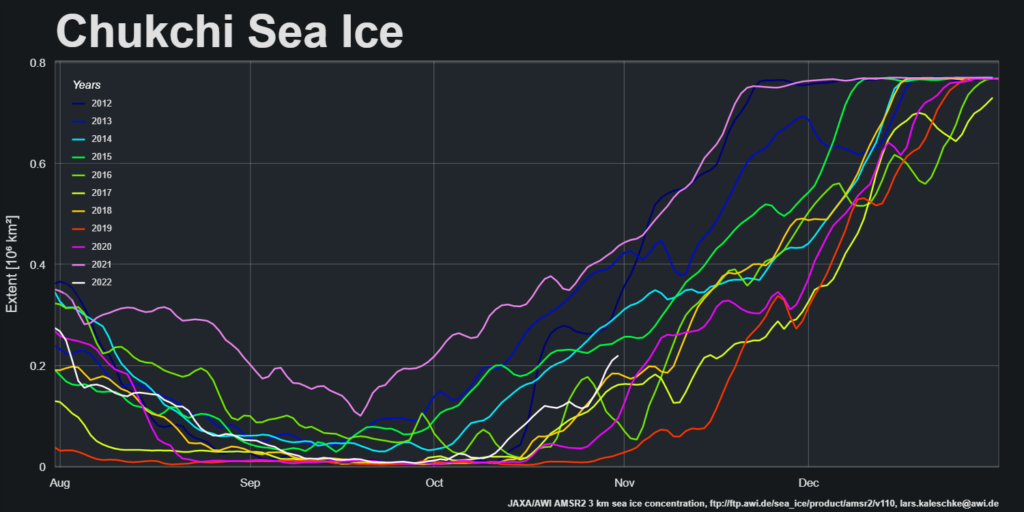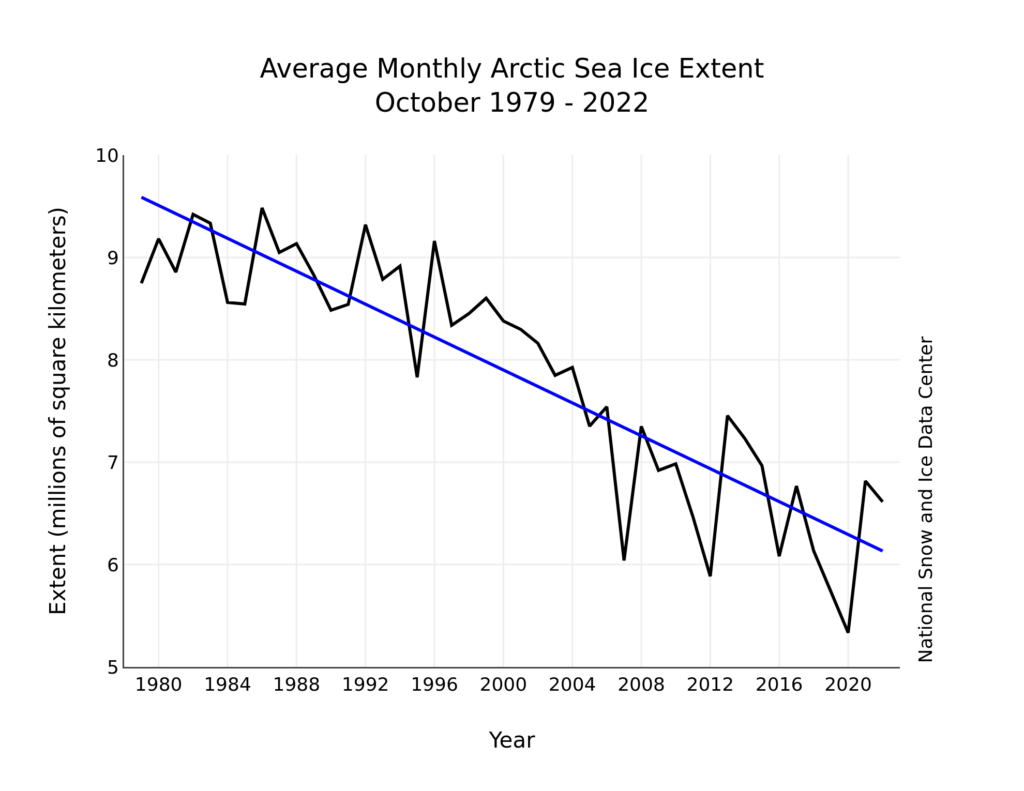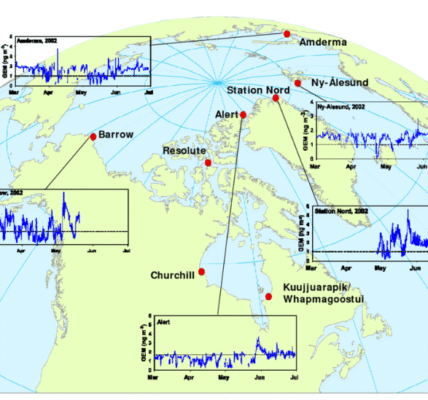A change is allegedly as good as a rest, so here’s an alternative view of high resolution AMSR2 area and extent created using the experimental tools provided by the AWI’s Lars Kaleschke at: https://sites.google.com/view/sea-ice/


After a brief pause mid-month the refreeze has accelerated again. Both metrics are in the upper half of the decadal range, with extent this year just above 2021 and area just below last year.
Next let’s take a look at sea ice concentration at the end of October:

The Laptev and East Siberian Seas are now largely frozen over, but there is still some open water in the Beaufort Sea, and particularly in the Chukchi Sea:


The SMOS thin ice thickness map seems to be stuck on October 25th at the moment, so here’s the latest combined SMOS/SMAP map instead:

The National Snow and Ice Data Center has published another edition of Arctic Sea Ice News. Especially for Peter here is their latest extent trend graph, in this case for the October monthly average:

Ice extent increased at a below average rate at the beginning of the month, and open water persisted for some time in the Laptev Sea, whereas the East Siberian Sea was among the first regions to freeze up. In the last ten days of the month, ice extent rapidly increased as the Laptev Sea iced over. The delayed freeze up in the Laptev Sea could be partly a result of ocean heating from the extended period of open water this past spring and summer. However, slow freeze up in this region in recent years is also consistent with observations of eddies within the Arctic Circumpolar Boundary Current that maintain a generally upward ocean heat flux, bringing warm Atlantic water along the eastern Arctic continental slope. The Arctic Circumpolar Boundary Current is a shallow, 200- to 400-meter-deep eastward-flowing current that follows the edge of the continental shelf and carries warm water at 2 to 3 degrees Celsius in shallow depths around the Arctic Ocean. The configuration of the continental shelf in the Russian Arctic brings this water very near the coastal Laptev Sea.
Moving on to weather conditions during October the NSIDC point out that:
Air temperatures during October at the 925 millibar level (approximately 2,500 feet above the surface) were near to above average over most of the Arctic Ocean (Figure 2a). The largest departures from average for this time of year were over the Kara Sea, where air temperatures averaged for October remained above freezing.

The average atmospheric circulation pattern was dominated by below average sea level pressure over nearly the entire Arctic. Pressures were as much as 10 to 12 millibars below average over the Chukchi and East Siberian Seas and stretching across the pole. This pattern is reflected in the persistence of positive values of the Arctic Oscillation Index for most of the month.

I’m not sure why the NSIDC didn’t provide an MSLP anomaly plot, so here’s one of those for good measure:

Somewhat belatedly, here is the PIOMAS Arctic sea ice volume graph up to the end of October 2022:

together with the thickness anomaly map:

The PIOMAS mid month gridded thickness data has also been released. Here is the map for November 15th:

Further news is now available on the December open thread.



